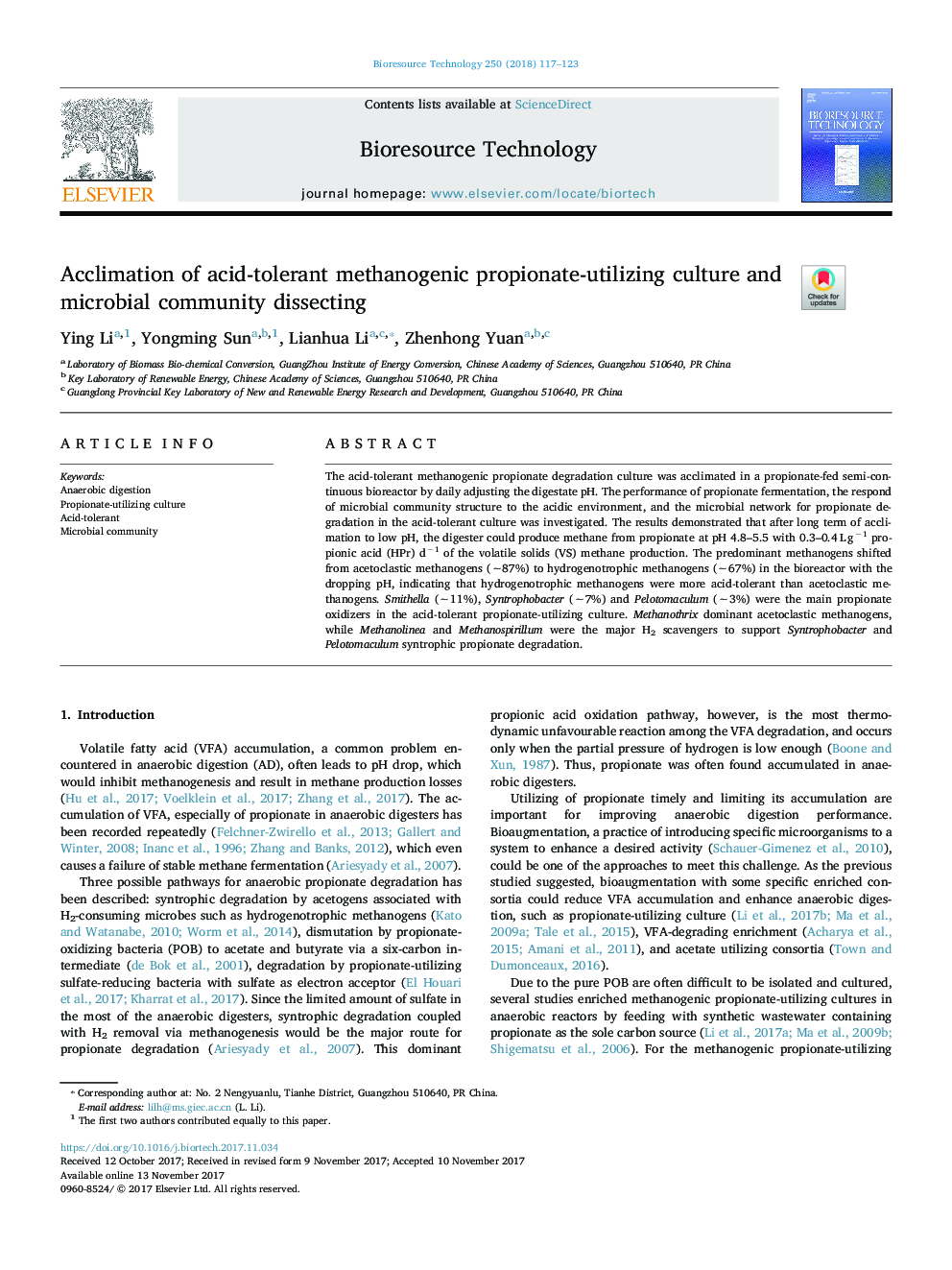| Article ID | Journal | Published Year | Pages | File Type |
|---|---|---|---|---|
| 7068703 | Bioresource Technology | 2018 | 7 Pages |
Abstract
The acid-tolerant methanogenic propionate degradation culture was acclimated in a propionate-fed semi-continuous bioreactor by daily adjusting the digestate pH. The performance of propionate fermentation, the respond of microbial community structure to the acidic environment, and the microbial network for propionate degradation in the acid-tolerant culture was investigated. The results demonstrated that after long term of acclimation to low pH, the digester could produce methane from propionate at pH 4.8-5.5 with 0.3-0.4â¯Lâ¯gâ1 propionic acid (HPr) dâ1 of the volatile solids (VS) methane production. The predominant methanogens shifted from acetoclastic methanogens (â¼87%) to hydrogenotrophic methanogens (â¼67%) in the bioreactor with the dropping pH, indicating that hydrogenotrophic methanogens were more acid-tolerant than acetoclastic methanogens. Smithella (â¼11%), Syntrophobacter (â¼7%) and Pelotomaculum (â¼3%) were the main propionate oxidizers in the acid-tolerant propionate-utilizing culture. Methanothrix dominant acetoclastic methanogens, while Methanolinea and Methanospirillum were the major H2 scavengers to support Syntrophobacter and Pelotomaculum syntrophic propionate degradation.
Related Topics
Physical Sciences and Engineering
Chemical Engineering
Process Chemistry and Technology
Authors
Ying Li, Yongming Sun, Lianhua Li, Zhenhong Yuan,
